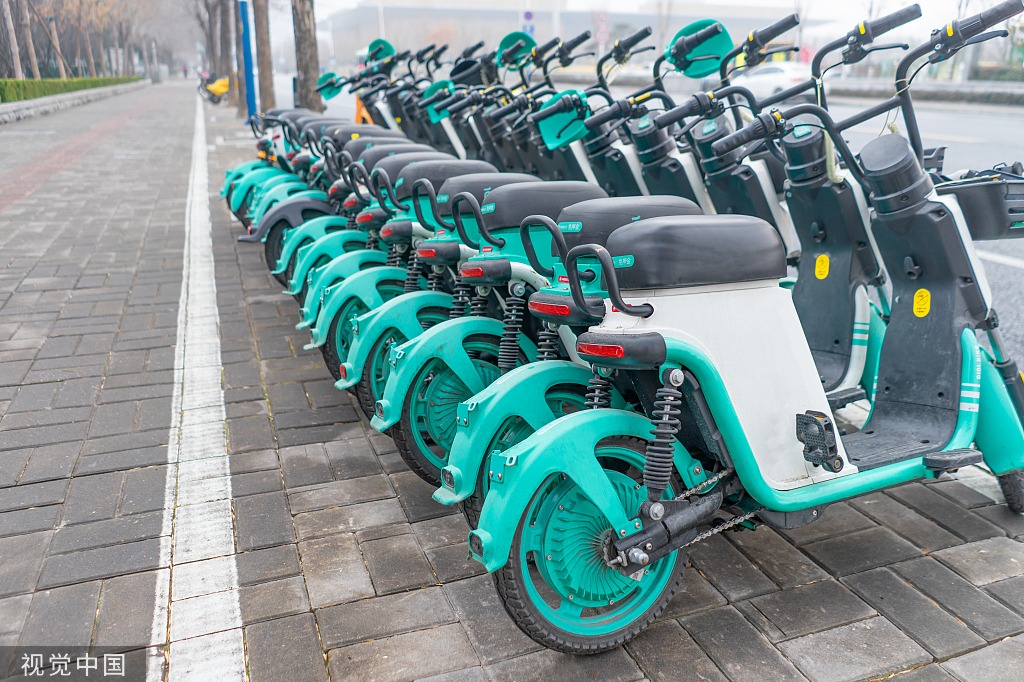Chinese brands becoming bigger hits abroad
By Mike Bastin | China Daily | Updated: 2024-04-02 07:19

Many would argue that a true indication of a country's economy is the number of home-grown international brands and the level to which they have made inroads into global markets. China and the Chinese economy are no different.
It is, therefore, encouraging to see an increasing number of Chinese companies, across an increasingly diverse array of industrial sectors, reaching beyond a recognizable level of international brand development. This became all the more evident when both Brand Finance and BrandZ, reputable international brand valuation organizations, put a record number of Chinese brands in their world top 100 list.
The new Chinese entrants to the top 100 most valuable global brands are Shein (clothing and accessories) and Nongfu Spring (bottled water). In fact, Shein was the highest ranked newcomer in BrandZ's June 2023 global rankings — 70th with a valuation of $24 billion.
But it is perhaps the consumer technology sector where Chinese brands are really going global — notable companies being TikTok, Tencent, Huawei, Taobao and Haier. For example, Brand Finance ranks TikTok seventh, WeChat 34th, Tencent 43rd, Huawei 55th and Taobao 96th in its list of 100 most valuable global brands for 2024.
It is clear therefore that Chinese brands can rise internationally and compete with the most well known and successful global brands across categories. For example, Chinese sports/fashion brands Anta and Li-Ning have both become international brands and compete against global giants such as Nike and Adidas.
But how can Chinese brands continue their global rise and in which sectors should we expect more internationally successful Chinese brands?
The global popularity of Chinese social media platforms and apps, such as TikTok, WeChat and Weibo, will surely play a big role in the continued growth of Chinese brands. Global brand development and brand management have for quite some time been dominated by an emotional narrative that attaches a brand to the country's roots, which resonates with consumers. It is with this in mind that the Chinese brands should incorporate into their brand-building exercise strategies to infuse traditional Chinese elements and symbols in their products.
This association with Chinese history and culture will not only work well with Chinese consumers, particularly the youth, it will also strike a chord with global consumers. Recent media coverage around the world of the Chinese Lunar New Year celebrations proves that Chinese history, culture and heritage are enjoyed and respected by people far and wide.
But importantly, the international ascent of more and more Chinese brands will also require careful collaboration with established Western brands. Hence, the plethora of collaborations between established Western fashion brands and Chinese fashion designers and their brands. Chinese fashion designers Angel Chen and Chen Peng both have collaborated with major Western brands, including H&M, Prada and Nike, in recent years.
Such cooperation between rising Chinese brands and their more established Western counterparts will help build a robust global supply chain that also underpins continued success across countries and regions. But perhaps most crucial of all factors in the continued global growth of Chinese brands is the input and influence of the younger generation, particularly those born in the mid-1990s. It is this group, which is most digital savvy and open-minded, that perhaps holds the key to boosting the confidence and creativity of designers to develop and maintain global brands.
Encouragingly, the younger Chinese generation is also consuming Chinese heritage. If it feeds itself into the design and development of Chinese brands, then international success is far more likely to follow, and soon.
Once again, it depends on the fashion industry and young, globally successful, Chinese fashion designers, many of whom have adopted such a bold and yet creative approach to their work and exhibited a determination to produce results to achieve global leadership.
For example, Yuan Qiqi's design was recently selected by US singer/songwriter Beyonce Knowles as the cover of her latest album, Renaissance. Examples such as this show the speed with which Chinese elements can go global.
Careful recruitment and development of the younger generation is, therefore, pivotal to the continued rise of global brands from China. It is the digitally savvy who value Chinese heritage that can best promote Chinese brands on the international stage, as Chinese fashion designers are playing a leading role in this endeavor.
The author is a senior teaching fellow at University of Southampton.
The views don't necessarily represent those of China Daily.
If you have a specific expertise, or would like to share your thought about our stories, then send us your writings at opinion@chinadaily.com.cn, and comment@chinadaily.com.cn.
























